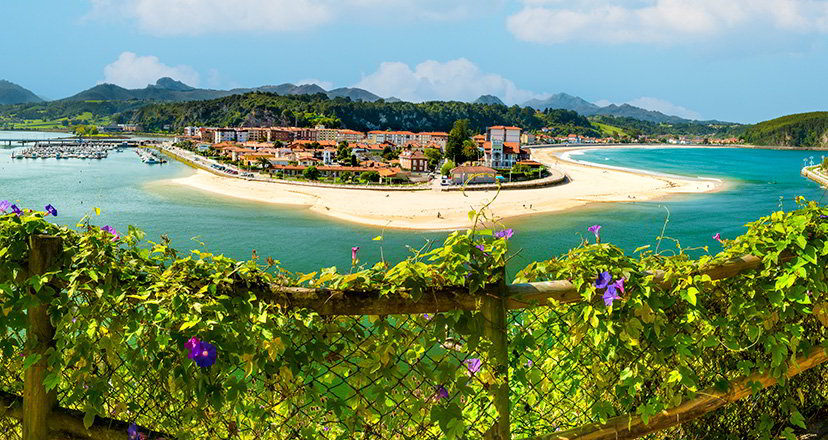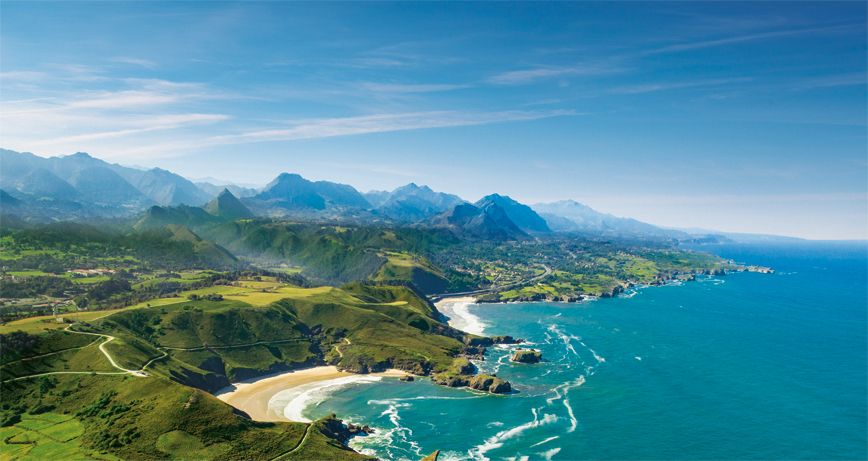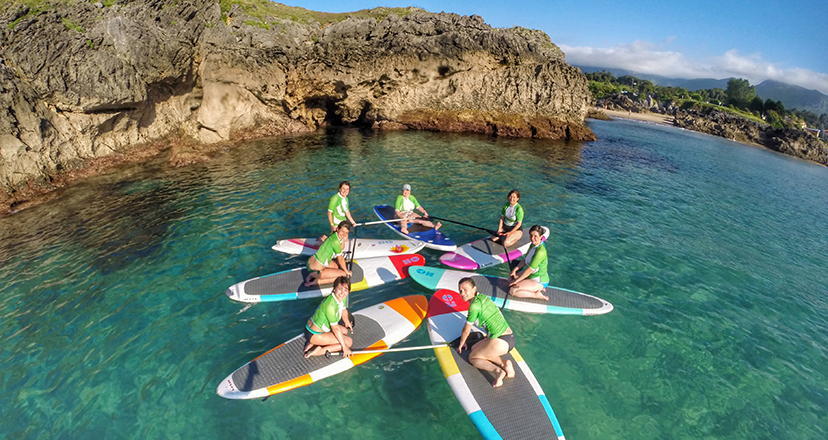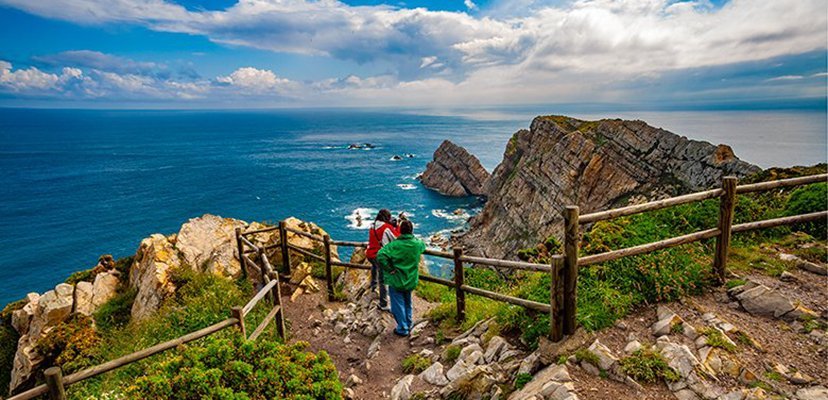Back Plans by the sea in the East of Asturias
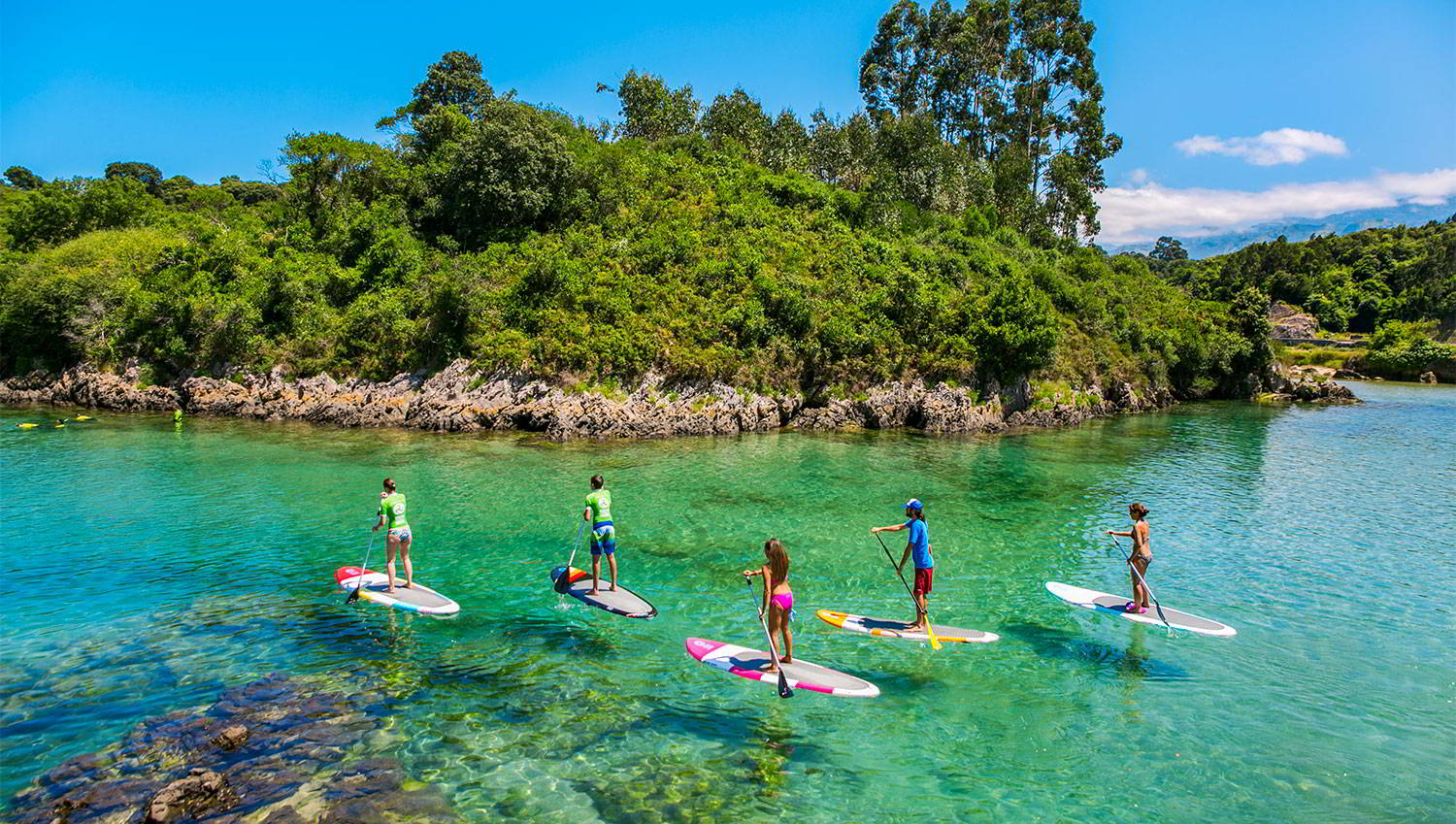
The best plans by the sea in Eastern Asturias
It's summer and it's holiday time. So the time has come to fully enjoy the coast and the multitude of different plans it has to offer.
It is summer time, holiday time, time for the coast and the sea. Asturias offers you dozens of plans to enjoy the coast, the waves, the breeze and the landscape. Different and rewarding plans, and even more imaginative than the traditional day at the beach...
Marine crossings to discover cenotes, caves and cliffs; following the trail of the dinosaurs, walking the Camino de Santiago de la Costa - the oldest existing coastal path -; reaching prehistoric idols; taking imperial routes; descending rivers full of history; discovering fresh water beaches; letting yourself be seduced by the dreamy views from a viewpoint, or enjoying a horseback route along the coast are some of the most suggestive options that we would like to suggest for you this summer.
Discovering ichnites
Along the coast of Asturias, between Gijón and Ribadesella, there is a marvellous coastline, which was christened a few years ago as the Dinosaur Coast, and which owes its name to the abundance of footprints and bone remains of dinosaurs and other Jurassic reptiles which, thanks to scientific research, have been identified over the course of time.
On this stretch of coast you can visit dinosaur ichnite (footprint) sites in the municipalities of Villaviciosa, Colunga and Ribadesella.
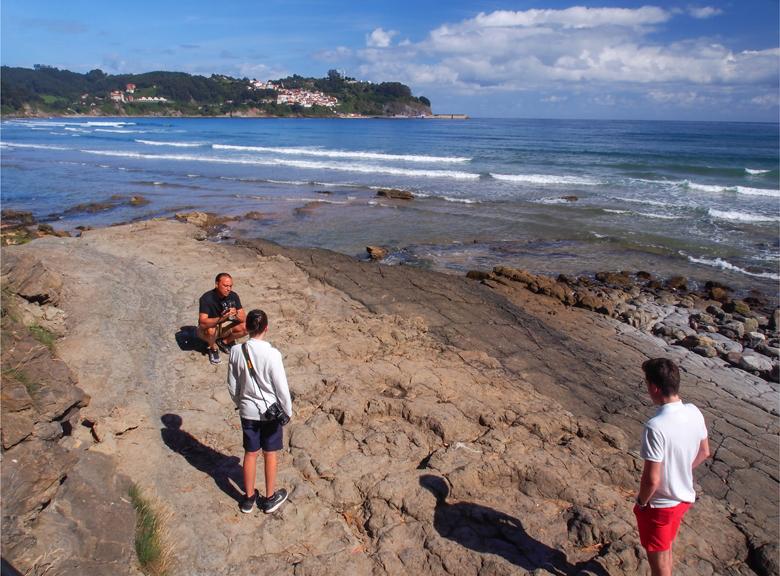
A wonderful route that will take you to the port and beach of Tazones, as well as to its lighthouse; to the beach of Merón; to the cliffs of Luces and Lastres; to the beach of La Griega; to the beach of Vega; to the cliff of Tereñes, and to the beach of Ribadesella.
And if you want to learn more about the world of dinosaurs, and do it in a fun and educational way, and enjoy it with your family, you can go to the Jurassic Museum of Asturias (MUJA), which is located very close to Lastres and is another marvellous place.
A sea crossing to enjoy caving and paddle surfing
Asturias is a true paradise for caving-paddle surfing, precisely because of the abundance of cliffs, as well as their beauty and shapes.
Caving-paddle surfing consists of exploring with the paddle board cliff areas where there are caves, rocky arches sculpted in the immense limestone rocks, or real saltwater cenotes.

It is an activity to enjoy to the maximum discovering places of incredible beauty, always better to do it accompanied by a guide, for his knowledge of the sites and the sea.
The stretch of coast between Ribadesella and Llanes, due to the karstic nature of the coastline, is an ideal area for this practice, which is becoming more and more popular in Asturias.
So you'll feel like a real explorer of the coastline...
Pilgrimage along the Coastal Pilgrimage Route to Santiago de Compostela
The Asturian coastline has a singularity that few others have: it is the stage through which the longest and one of the oldest Pilgrims' Routes to Santiago de Compostela passes.
The Camino del Norte or Camino de la Costa is the route followed by the first waves of pilgrims coming from northern Europe.
So a wonderful plan to walk along the coastal strip, exercising, taking the air and enjoying the scenery is to practice this "historical hiking" that means the Jacobean route.

You have a few stages to complete, and here we suggest the one that runs between Ribadesella and San Salvador de Priesca, mainly because in just a few kilometres you will get to know a fishing village like Ribadesella/Ribeseya; beaches like Vega, Arenal de Morís or La Isla, and a pre-Romanesque jewel like San Salvador de Priesca.
Don't think too much about it and start walking!
A trip to the Idol of Peña Tú
But it's not just historical itineraries that you'll find on the Asturian coast. Prehistory will also leave you spellbound.
An exquisite example of this call of prehistory is the famous Ídolo de Peña Tú, located in Puertas de Vidiago (Llanes). The hike to the idol is a beautiful route, where you walk among chestnut and beech trees, with the Asturian greenery as a backdrop.
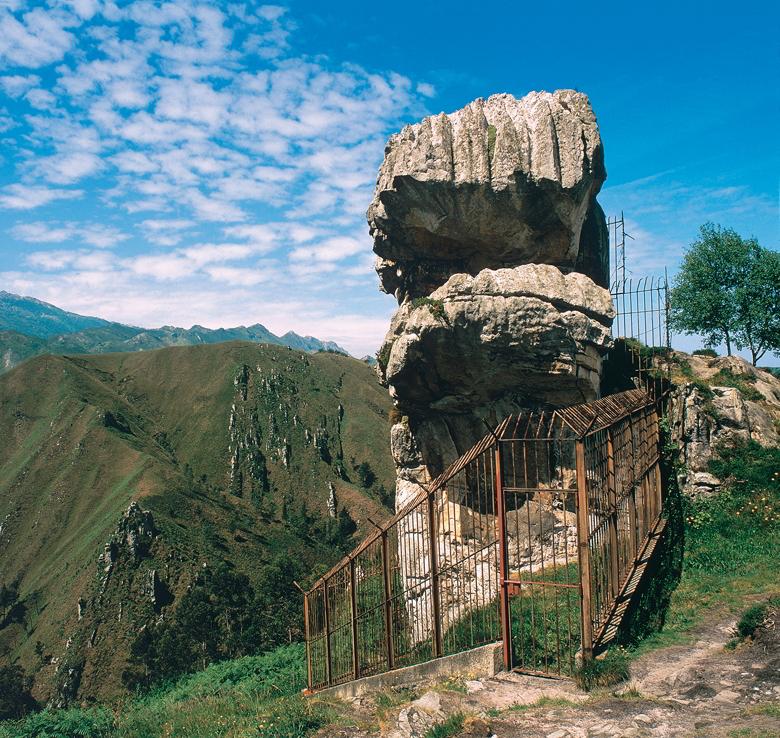
When you reach the Ídolo, you will be amazed: an immense zoomorphic rock welcomes you. You will be at one end of the Sierra Plana de la Borbolla, and this large rock seems to have had a sacred character in prehistoric times, hence the small figures painted in red in an open shelter in the rock.
The views from the area are spectacular, and during the walk you will pass very close to the Camino de Santiago del Norte or the Coastal Way...
A really exciting walk!
A Descent of the Sella to suit you
Rivers are a source of life and beauty in Asturias. And they are also ideal settings for healthy and enjoyable leisure activities.
The Sella is one of these rivers. It is perhaps the best known internationally thanks to the Fiesta de las Piraguas or International Descent of the Sella, an event that is ninety years old and which combines festivity and sport like no other.
Precisely three decades ago, local canoeing enthusiasts came up with the idea of an active tourism activity, in which the same river route is followed as the Fiesta de las Piraguas: this is how the tourist descents of the Sella were born.
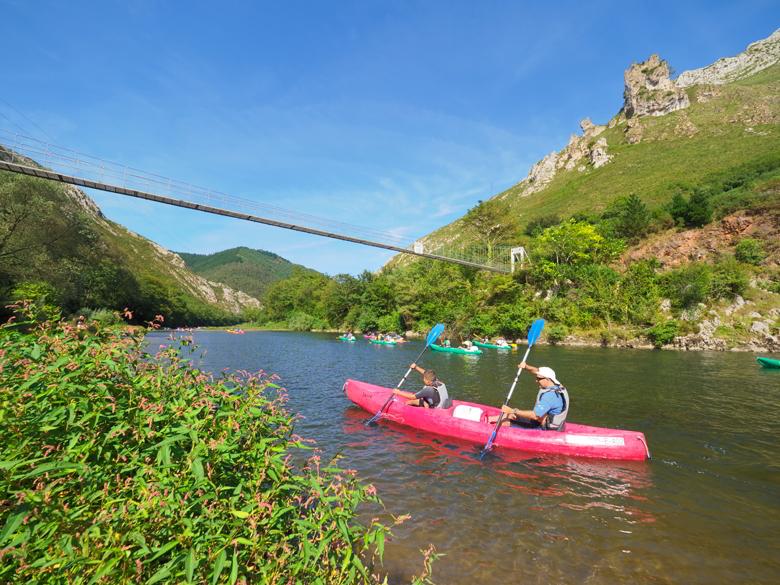
It is one of the most popular and fun active tourism activities. Perfect to do with family or friends, or to go with your pet, if you have one.
Numerous companies offer this tourist descent.
So go sailing between Arriondas and Ribadesella!
The Route of Charles V, a walk through History
On 19 September 1517, the young Prince Charles of Ghent, who was to become King Charles I of Spain and Holy Roman Emperor as Charles V, the most powerful man on earth during the first half of the 16th century, landed in the fishing village of Tazones. On that first journey he arrived from Flanders to take possession of the kingdoms of his grandparents, the Catholic Monarchs. After being received in Tazones, he moved to the town of Villaviciosa, where he spent four days, staying at the Casa de los Hevia, and then continued his route to Valladolid, where he was sworn in as King on 9 February 1518.
On his journey between the two towns, the young prince was able to enjoy the beautiful landscapes of the beautiful Asturian land he was discovering.
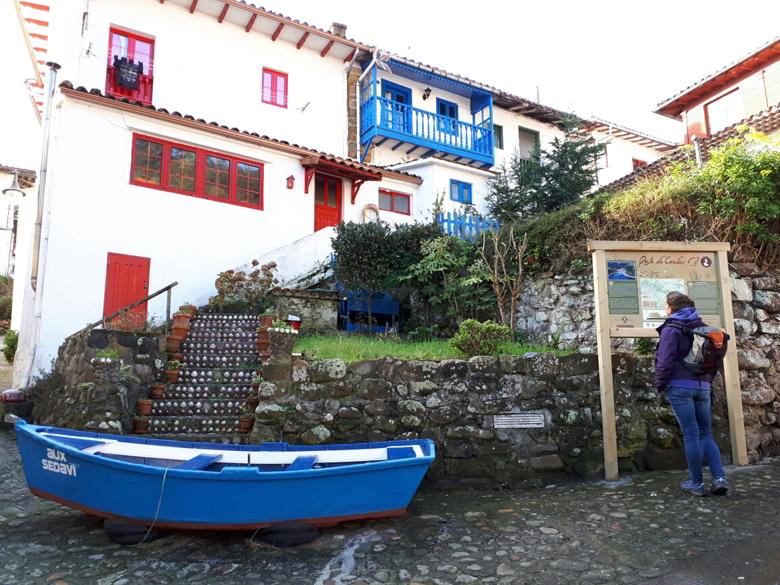
Today you can take that walk between the beautiful towns of Tazones and Villaviciosa, both declared Historic-Artistic Sites. You will enjoy fishing, rural and agricultural landscapes, with the pomaradas as your travelling companions, and in the unparalleled surroundings of the Villaviciosa Estuary, declared a Partial Nature Reserve and considered one of the estuaries with the greatest biological richness in the north of the Iberian Peninsula.
A simple route, known as the Charles V route, of just over 11 kilometres, where you will enjoy authentic "imperial landscapes"!
Be seduced by the charm of river beaches
These holidays are an ideal opportunity to try the delights of river bathing. Rivers have many advantages when it comes to refreshing yourself.
You are in peaceful surroundings, with lush green vegetation, often crystal-clear water, and sometimes in the vicinity of monumental bridges, idyllic villages or historic sites.
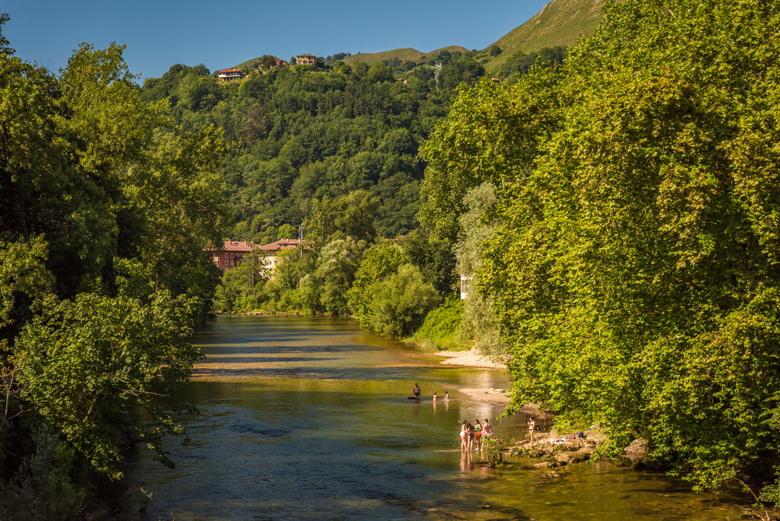
The river beach we suggest here is in the town of Cangas de Onís, the former capital of the ancient Kingdom of Asturias.
There, in the vicinity of where the waters of the rivers Güeña and Sella meet, a delightful beach is formed, perfect for a quiet and refreshing swim...
Let yourself be seduced by the charm of the many secluded river beaches of Asturias!
Subjugated by the poetics of the ruins of the Tina Monastery
Have you ever noticed that some ruins are so enigmatic that they subjugate you? A clear example is the Monastery of Santa María de Tina, in Ribadedeva.
In the vicinity of the Pindal Cave, and behind the hermitage of San Emeterio, a small route will lead you to the ruins of a Cistercian monastery: Santa María de Tina.
The route is beautiful, crossing a holm oak forest, and crossing a small bridge from which, in the rainy season, you can see a small waterfall, which ends up falling into the sea.

The ruins emerge from the profuse vegetation, as if by a miracle. The monastic enclave has its origins in the 7th-8th centuries, during the establishment of Christianity in this region. It was originally an "eremitic" monastery, created by the grouping of various ascetics - people who chose austerity as a way of life in places of special energy.
The ruins still exude the primitive austerity that inspired the origin of the monastery, which over the centuries has strengthened its role thanks to the Jacobean pilgrimage (the Camino del Norte or Camino de la Costa runs nearby).
Tina will dazzle you with its magic and mystery... Don't miss it!
To open your eyes wide
One of the best plans on the coast is to go with your eyes wide open, and your gaze eager for discoveries and surprises.
And the Asturian coast makes it easy for you. There are numerous viewpoints, easy to access, where you can enjoy the spectacle of nature and the landscape.

Here we invite you to discover some of them, such as the Picu viewpoint, in Ribadedeva, from where, on clear days, you can see as far as the Picu Urriellu; the La Boriza viewpoint, in Llanes, where you can see the Sierra del Cuera, the Picos de Europa, and such wonderful beaches as Andrín or Ballota, or the Fitu viewpoint, in Parres, from where, on clear days, you can see all the mountains of eastern Asturias, as well as the Cantabrian Sea.
On horseback, to get another perspective of the landscape
Another way to enjoy the many scenic pleasures of the coastline is to go horseback riding.
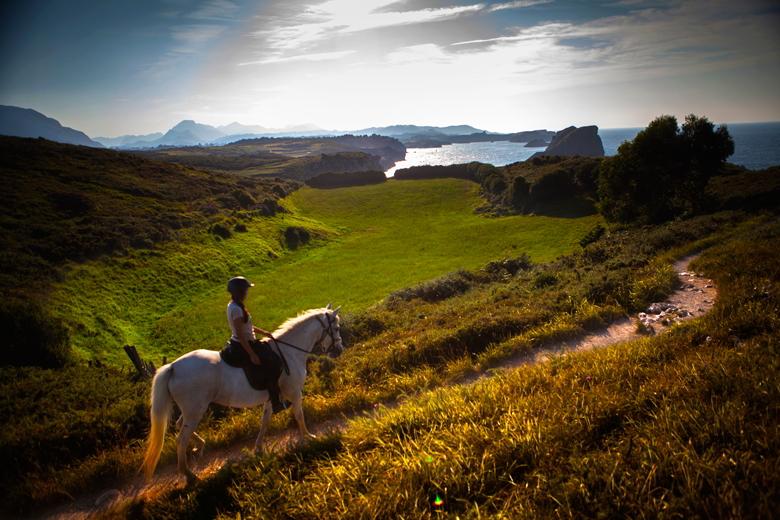
Horse riding is one of the most sustainable and healthy active tourism activities you can do.
With the added incentive that, in addition to the natural familiarity with the horse, you add that the height at which you see mounted, allows you another point of view on the landscape, which will surprise you by how pleasant it is.
Whether you are looking towards the sea or towards the mountains, a horseback ride is always another way to enjoy...
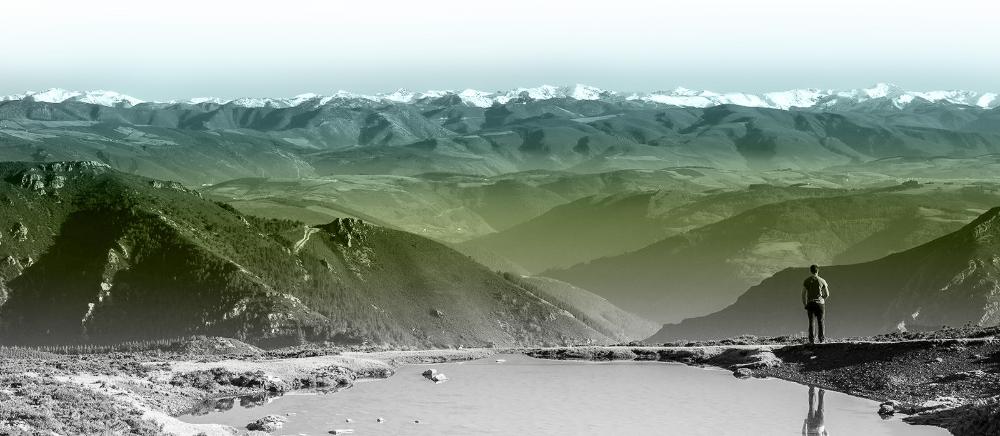
Subscribe to our newsletter and take advantage of offers, discounts, and news
Subscribe

